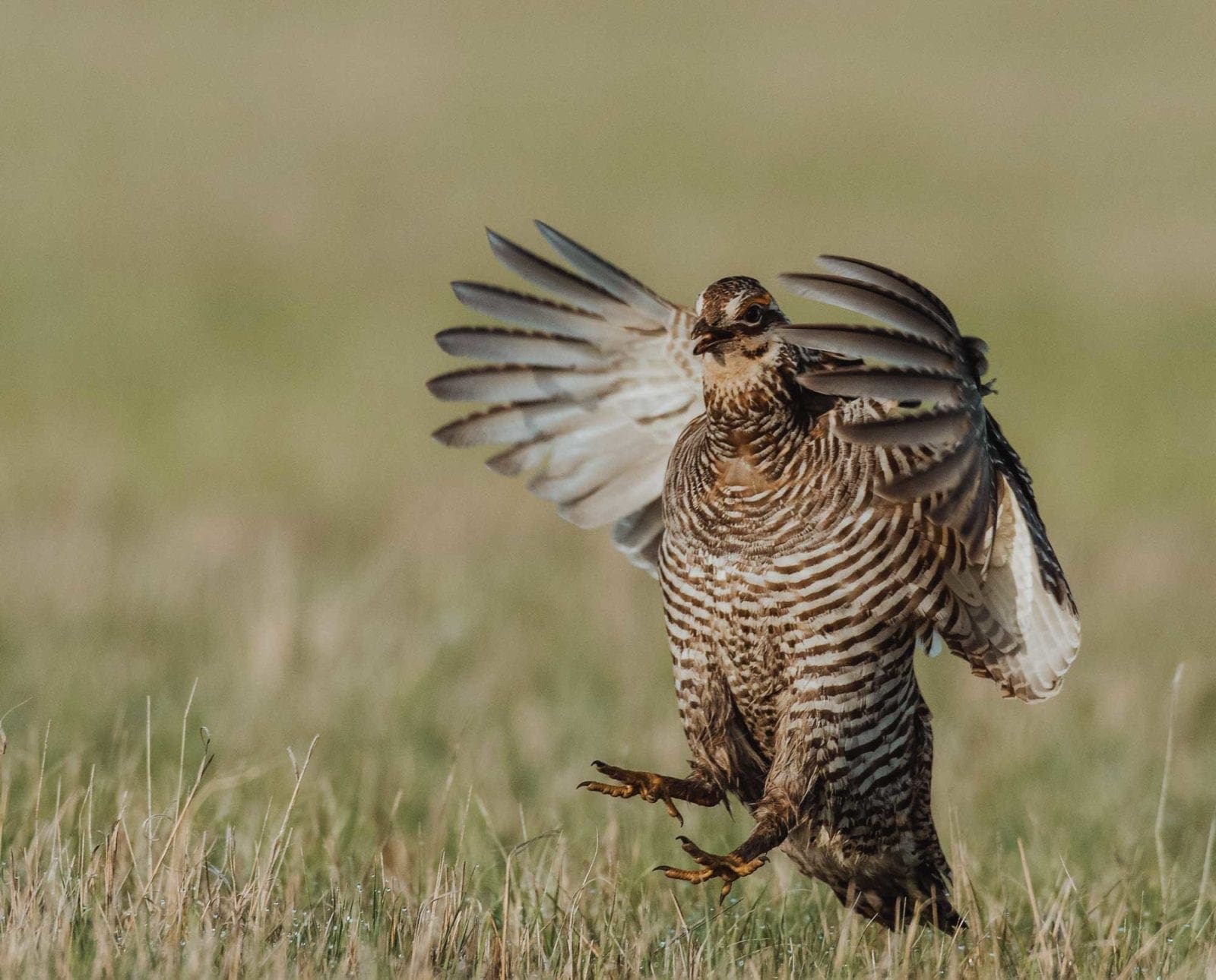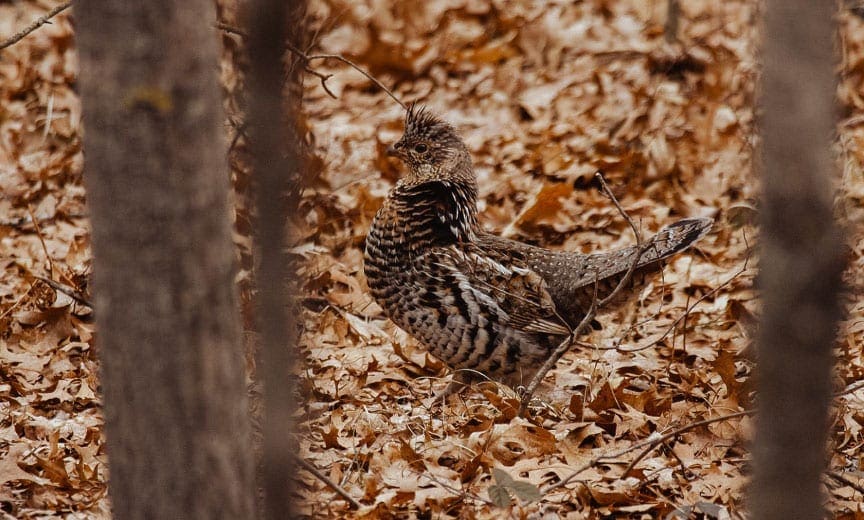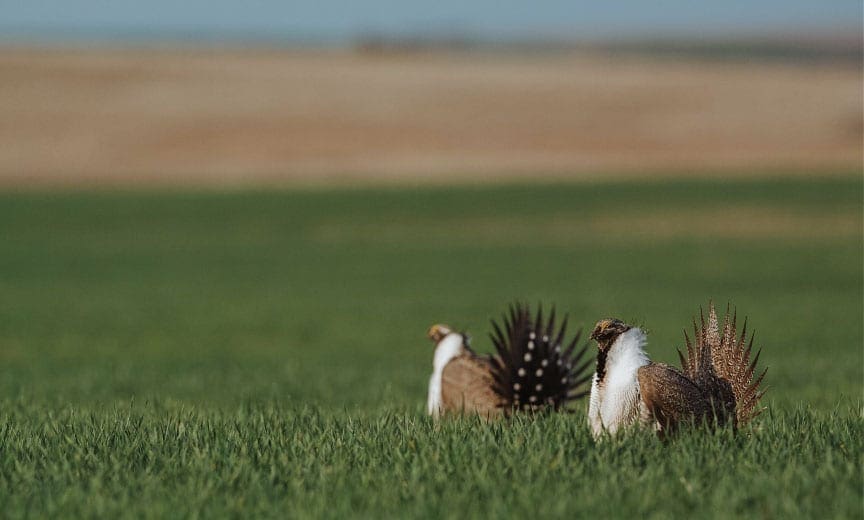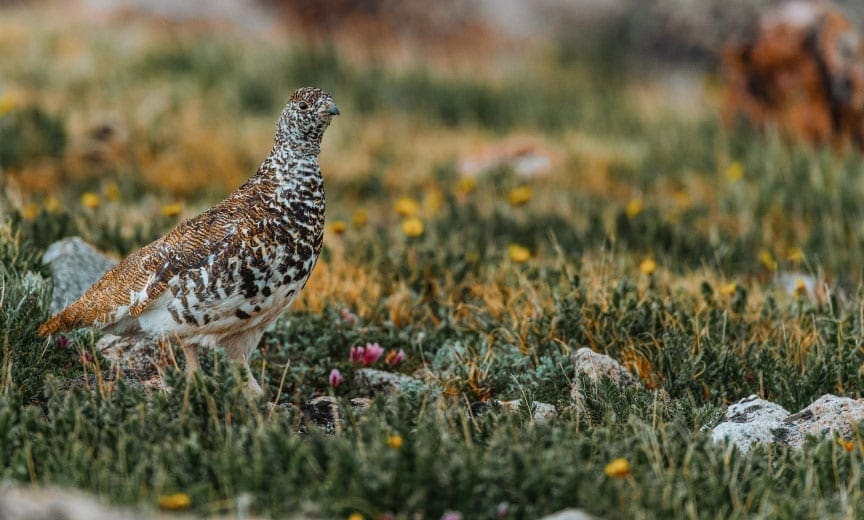Home » Conservation » What Defines the Grouse Family?
What Defines the Grouse Family?

Ryan Lisson is a biologist and regular content contributor to…
Similarities and differences within the grouse family of North America, part of the Galliformes order
The word “grouse” can mean very different things depending on where you live and hunt in the world. Some use it to refer to ruffed grouse while others only use it to describe sharp-tailed or sage grouse. Most people don’t realize how large the grouse family actually is, which further adds to the confusion.
Grouse belong to the Galliformes, an order of ground-dwelling birds. They are distant cousins to ring-necked pheasants and turkeys. While there’s a very wide range of species within the family around the world, there are some common features that most of the grouse species share.
The Body Description of Grouse
In general, most grouse species exhibit sexual dimorphism, meaning that males and females look different from each other—in some cases, very different. Males tend to be larger than females and may have some distinct physical traits, such as colorful feathers or crests (for courtship displays). They don’t have spurs on their legs like chickens or turkeys as the two groups are separate. Their toes are covered in feathers or they grow pectinations (i.e., fleshy comb-like structures) to help insulate themselves and stay aloft in deep snow. While these species are very capable of flight (and can reach impressive speeds while flying), they prefer to walk or run from predators first and have powerful legs.
The Reproduction Cycle of Grouse
Most male grouse species put on quite the courtship display. Whether dancing on a lek, drumming on a log, or calling from a tree, these birds like to show off. Some spread their tail fans and others use their brightly colored throat patches. Most species are polygamous and spend little time together apart from breeding. Nest sites are nearly always on the ground with some kind of aerial cover (e.g., grass, shrubs, tree boughs, etc.) nearby. The hatched chicks are also precocial, meaning they can feed themselves almost immediately and fly within a few days, although they stay with the hen through their first fall.
Watch: Sacred Lek – A Sharp-tailed Grouse Film
Feeding behaviors of Grouse
Nearly every grouse starts its life by feeding heavily on insects due to their high protein content. But they eventually switch to a mostly vegetarian diet, feeding on leaves/needles, buds/catkins, seeds, fruits, and mushrooms. They have large crops to quickly fill up with food, and powerful gizzards to grind and mash the food up before digestion.
Different species of North American Grouse
Grouse species occur around the world, including across Europe and North Asia, but here are the broad groups of grouse that occupy North America specifically. There are also subspecies within most of these species, which vary by geography.
Forest Grouse
Forest grouse tend to be somewhat reclusive and live solitary lives, although young birds and hens may form small, occasional coveys in the fall and winter. Per their name, forest grouse prefer dense forest cover with a mosaic of habitat types (i.e., wetlands/uplands, conifers/hardwoods, etc.) nearby. Because of this dependence on forest habitats, healthy forest management is critical for this group.

Forest grouse include:
• Ruffed Grouse
• Spruce Grouse
Prairie Grouse
Aptly named, these grouse species prefer open grassland habitats with little shrub or tree cover. These species are best known for their lekking behavior—leks are usually flat areas in open country where numerous birds gather to display. Prairie grouse are the most social of the group, often congregating in medium-sized to huge groups on lek sites.
As of right now, the lesser prairie chicken is the most vulnerable from a conservation standpoint. The reduction in grassland habitats due to conversion to agriculture, development, or woody species encroachment has drastically reduced populations of prairie grouse.

Prairie grouse include:
• Sharp-tailed Grouse
• Greater Prairie Chicken
• Lesser Prairie Chicken
Mountain Grouse
While some technically consider these grouse species to also be forest grouse, they definitely occur in some mountainous terrain compared to the ruffed or spruce grouse. To reach the high elevations they live at, you will likely have to don some sturdy hunting boots. Mountain grouse are also sometimes called “blue grouse” as the species used to be combined into this one designation, but have since been split.

Mountain grouse include:
Sage Grouse
Not surprisingly, sage grouse are most abundant where large sage flats and sage-steppe habitats occur. These species need undisturbed sagebrush areas with very few trees present. Like the lesser prairie chicken, the Gunnison Sage-Grouse is the most vulnerable, and they are limited to a very small area of Colorado and Utah.

Sage-grouse include:
• Greater Sage-Grouse
• Gunnison Sage-Grouse
Ptarmigan
Most people don’t realize that ptarmigan are part of the grouse family. They live seemingly very different lives and occupy a different part of North America than most game birds. Most ptarmigan specialize in northern boreal or tundra habitats with little vegetation and lots of rocky slopes. To help them blend into their surroundings better, all these species develop white feathers before winter.

These include:
• White-tailed Ptarmigan
• Willow Ptarmigan
• Rock Ptarmigan
While there are lots of other great upland birds to hunt in North America, there’s no denying the appeal of the grouse family. No matter which species come to mind for you, there’s something special about each one of them.
Ryan Lisson is a biologist and regular content contributor to several outdoor manufacturers, hunting shows, publications, and blogs. He is an avid small game, turkey, and whitetail hunter from northern Minnesota and loves managing habitat almost as much as hunting. Ryan is also passionate about helping other adults experience the outdoors for their first time, which spurred him to launch Zero to Hunt, a website devoted to mentoring new hunters.



